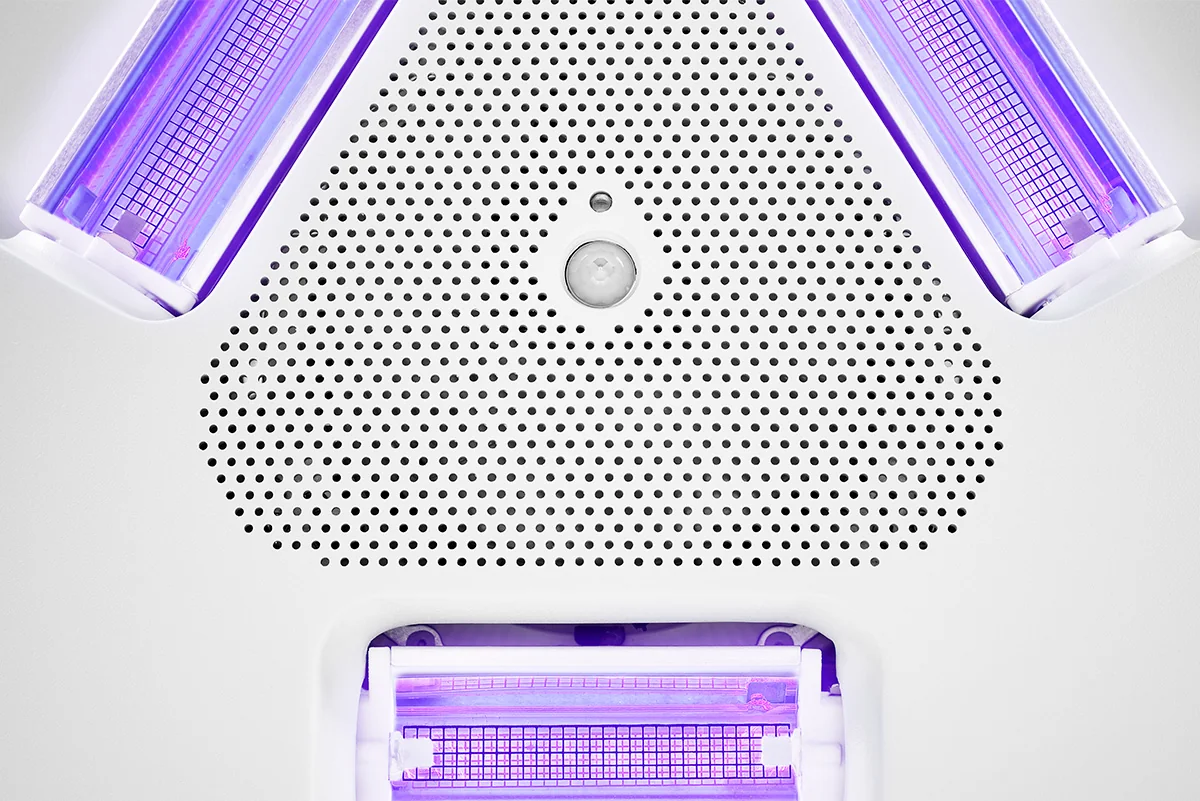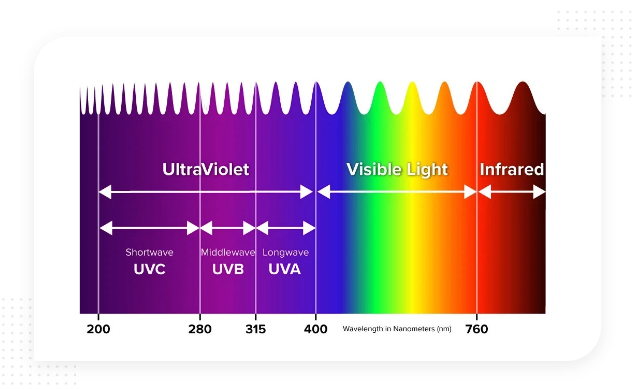
What is Germicidal Ultraviolet-C (UVC) Light?
If you’ve been looking into safe and sustainable disinfection methods for your building, you’ve probably heard about germicidal ultraviolet-C light. But what is germicidal ultraviolet-C light, and what can it do to reduce microbial loads?
To answer that question, we’re going to have to start by looking at the electromagnetic spectrum.
A Quick Look at the Electromagnetic Spectrum

Most types of light on the electromagnetic spectrum appear naturally on Earth, like visible light or radio waves. This natural exposure to visible and infrared light has forced harmful microorganisms to develop immunity to those light wavelengths. Visible and infrared light have long wavelengths with low frequency, which means that any type of long-wavelength light will have little to no effect on bacteria or viruses.
On the other end of the electromagnetic spectrum is ultraviolet light. With shorter wavelengths that travel with more frequency, UV light can be broken down into several types, with UV-C being the third and strongest type of UV light.
UV-C Light and Microorganisms
Usually, UV-C light stays in space. Our ozone layer protects us from the sun’s UV-C radiation, so UV-C light doesn’t appear naturally on Earth. This means microorganisms like viruses and bacteria aren’t resistant to that light.
When those microorganisms are exposed to UV-C light, it disrupts the protein structures that help them grow and reproduce. Without those structures, the microorganisms are destroyed or inactivated. Influenza, E. coli, and SARS-CoV-2 are just a few examples of the types of microorganisms that UV-C light can reduce by 99.9% or more.
Even within the umbrella term of ‘UV-C’ light, there are different types. UV-C light covers all light with a wavelength of 100-280 nanometers, and different wavelengths have different effects. For instance, 254nm UV-C is not safe for human exposure because it can penetrate the outer layers of the skin or eyes and cause irritation. Conversely, 222nm is safe for human exposure because the 222nm wavelength cannot penetrate the outer layers of the skin or eyes. Both types of UV-C light are effective in penetrating microorganisms’ structures and disrupting them.
Simply put, germicidal UV-C light kills germs.
R-Zero Uses UV-C Disinfection
R-Zero’s disinfection solutions use UV-C light to inactivate 99.9% of target microorganisms in the air and on surfaces. UV-C room disinfection can work anywhere, including schools, workplaces, and other facilities.
Indoor air quality matters, especially in crowded or high-traffic spaces. UV-C light doesn’t leave a residue or smell like other cleaning methods might, and it can operate automatically, allowing life to continue as normal in your building.
Get Germicidal UV-C Light Protection for Your Space
R-Zero’s suite of UV-C products provides safe and effective UV-C disinfection that can make any building better.
Are you ready to learn more? Contact us today to find out what your organization needs.
Curious about how each of R-Zero’s products uses UV-C light? Check out our report on how R-Zero technology uses different wavelengths of UV-C light to disinfect the air and surfaces in any space.
More posts you might like
-

The evolution of workplace experience and design: 4 trends shaping the future of office spaces in 2024
As workplace standards evolve, office design must adapt to new expectations around hybrid work and sustainability. JLL’s recent U.S. and Canada Design Trends and Cost Guide highlights key shifts shaping the future of office spaces. Workplace experience trend 1: Human-led design Workspaces are being reimagined to support both collaborative and focused work. The emphasis is […]
-

Embracing the Future of Buildings with BOMA’s 2024 Office Standard
The Building Owners and Managers Association (BOMA) Office Standard is a strategic tool that empowers property managers, owners, and tenants to navigate the complexities of the commercial real estate market. Used to compute the floor area in and around office buildings and updated to reflect the changing needs of the CRE market, the BOMA Office […]
-

The Importance of Improving Indoor Air Quality in Senior Care Facilities
With the increasing number of wildfires happening across North America every year, providing optimal indoor air quality in senior living facilities has never been more essential. Last year, wildfire smoke affected 120 million people in Canada and the United States, triggering air quality alerts across these regions. Seniors are particularly vulnerable to poor air quality […]